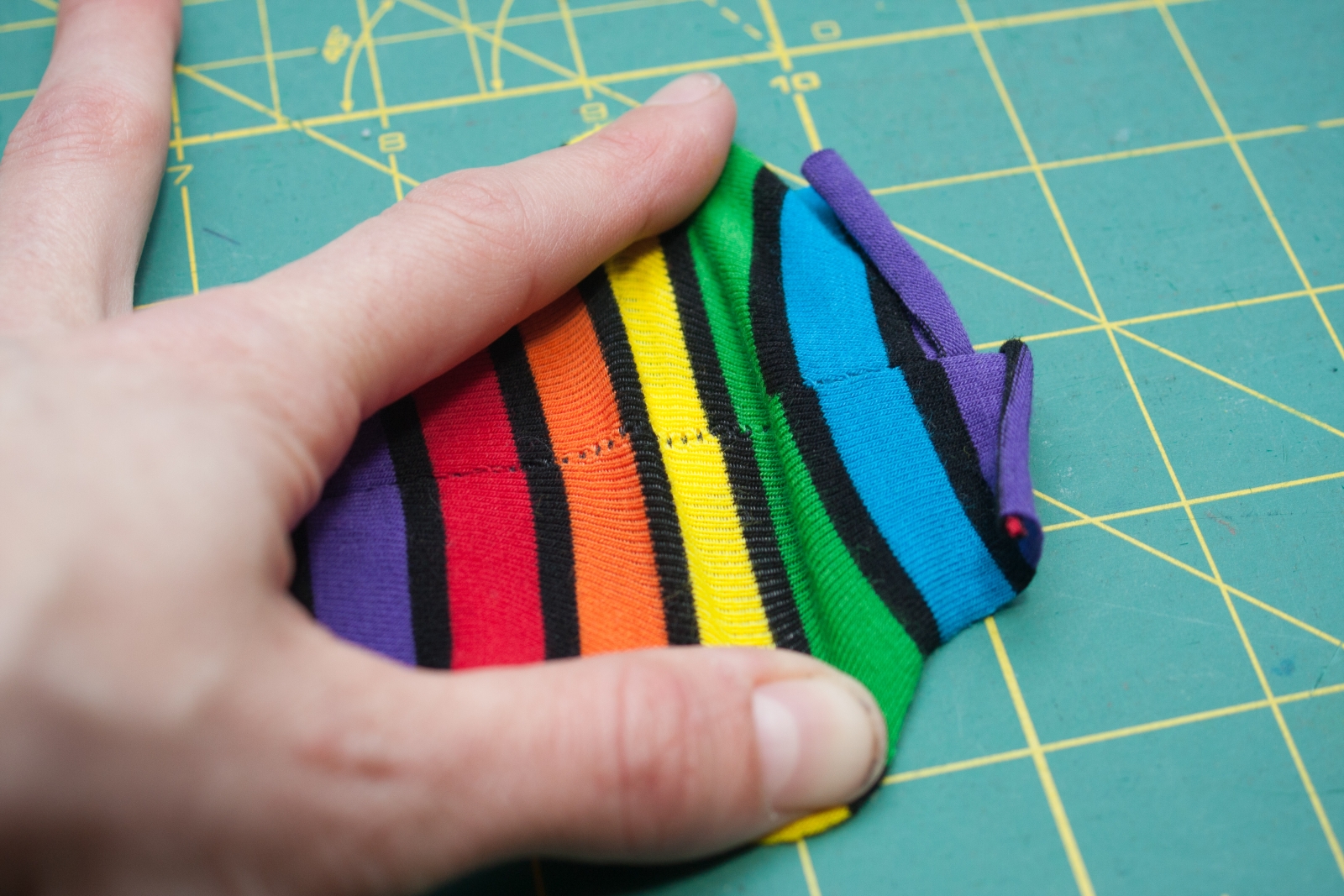Battle of the stretches
For anyone who began their sewing journey using wovens, one of the biggest adjustments to make when sewing knits is getting the stiches right. When you are making a quilt or basic pajama pants, a basic straight stitch will take you from start to finish. When working with knit, the sitches have to move with the fabric or the stitches will pop leaving holes in your seam that just get worse with time.
Most people who continue sewing with knits and are building (or have established) a business invest in a serger. Sergers are definitely game changers; they're fast, they make a clean edge, and the resulting seam stretches with the fabric. That being said, they're expensive. Entry models go for between $100-$200, and of course the more features you want, the more you pay.
If you will be sticking to your sewing machine, you do have a few options. The triple stitch creates mechanical stretch by increasing the length of thread between each stitch, but it's time and thread consuming. A zig-zag stitch likewise lends mechanical stretch to the seam, but the resulting seam isn't as polished as each stitch is offset from the previous.
I've always been wary of stretch threads. That is, until now.
I accidentally stumbled upon a product that Coats & Clark debuted last year but that I hadn't seen until today and it's called Eloflex. I admit, I wasn't impressed at first. It looked just like regular dual duty or all purpose thread, but I figured that I didn't have much to lose.

To test the new product, I decided to compare it to my regular thread (I usually use C&C or Gutterman cotton thread) and, as a measure of its stretchiness, to my serger (threaded with Maxi-Lock).
I cut three different stripes to keep track of which thread I used: white rainbow stripes for my regular thread, black rainbow stripes for my new stretchy Eloflex thread, and gray rainbow stripes for my serger (all of these fabrics are from TKB, on Facebook at https://www.facebook.com/groups/tkbprintsbst/ ) Each of these fabrics had roughly 60% stretch)
I used a regular running stitch (set at 2.5mm stitch length) for both the regular thread and Eloflex, making sure to have matching thread in the bobbin. I made sure that each piece of fabric was 5" long, and set to work.

The first thing I noticed is that it's just as easy to thread a machine using Eloflex as it is my regular thread. While it's noticeable, the stretch doesn't interfere in any way. Likewise, the sewing action felt the same. The first time I noticed a difference was when I pulled the fabric out from the presser foot. I wasn't anticipating any difference at this point, so it surprised me a little.
Since each piece of fabric was 5" long, I decided to see how long each piece would comfortably stretch.
The regular thread predictably stretched the least: from 5" to 5.5" (10%), The serged piece stretched from 5" to 6" (20%) , and the stretch thread took the piece of fabric from 5" to 6.5" (30%) ; even more than the serged piece! To really test them, I then tried to stretch them until the stitches popped. The regular thread popped at 6" (20%), the serger thread popped around 6.5" (30%), and the stretch thread made it almost to 7" (40%!) before popping.
I wasn't sure if the stretchiness of the thread would translate into more visible stitches on the right side of the fabric, but after stretching all of the seams horizontally, there was no difference among the three. (Shown: TKB black rainbow stripes with black Eloflex thread)

I am officially amazed and will now be using this for topstitching in rotation with my coverstitch (becuase sometimes you just want to straight stich and done.) The drawback of the thread is that it isn't readily available in many colors: so far I've only found white, black, gray, natural, and navy from my usual sources.
What do you think? Are you willing to give it a try?
Available at Amazon (affiliate links)

